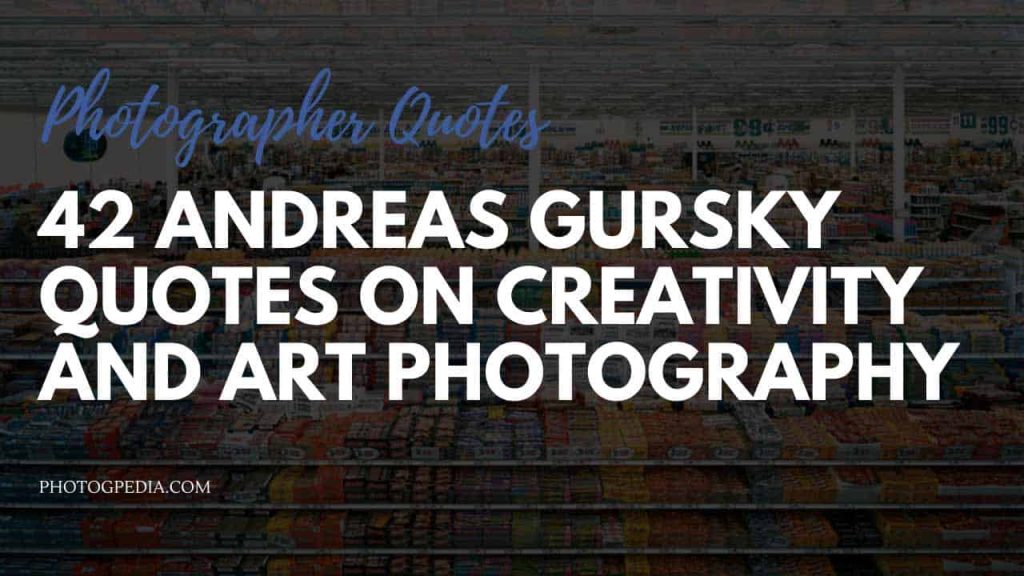Looking for the best Andreas Gursky quotes? Then you’ve come to the right place. Andreas Gursky is a German art photographer known for his large-scale digitally manipulated images. He describes his unique style – in which he takes panoramic shots that capture a whole scene in one image – as a “God’s-eye view” of the world.
His work is held in the public collections at some of the most prestigious galleries including the Museum of Modern Art and Tate Modern. Gursky has twice earned the distinction of the world’s most expensive photographer: In 2006, 99 Cent II (1999) sold for $3.35 million. Five years later, Rhine II (1999) sold for $4.3 million.
In this article we’ll be sharing our favorite 42 Andreas Gurksy quotes on art photography, subjects, technique and process, printing and much more.
Andreas Gursky Quotes
For me, vision is an intelligent form of thought.
I read a picture not for what’s really going on there, I read it more for what is going on in our world generally.
Since the photographic medium has been digitized, a fixed definition of the term “photography” has become impossible.
A word is worth a thousand images.
It is not pure photography, what I do.
My photographs are ‘not abstract.’ Ultimately, they are always identifiable. Photography in general simply cannot disengage from the object.
People keep trying to find a matrix for the perfect image, but it’s intuition, it’s not something that can be taught.
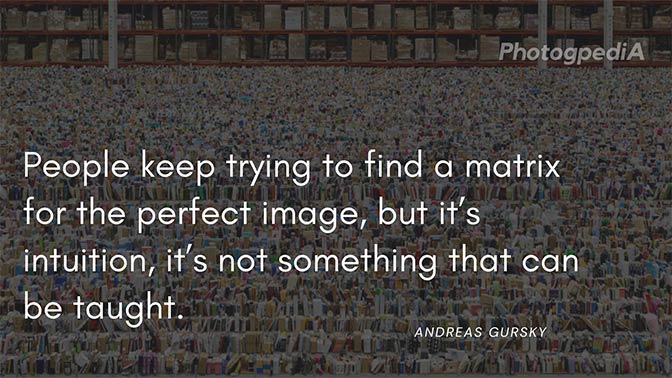
Gursky on Subjects
Try to understand not just that we are living in a certain building or in a certain location, but to become aware that we are living on a planet that is going at enormous speed through the universe. For me it’s more a synonym. I read a picture not for what’s really going on there, I read it more for what is going on in our world generally.
I only pursue one goal: the encyclopedia of life.
I am never interested in the individual, but in the human species and its environment.
My preference for clear structures [within my photographic practice] is the result of my desire, perhaps illusory, to keep track of things and maintain my grip on the world.
My pictures really are becoming increasingly formal and abstract. A visual structure appears to dominate the real events shown in my pictures. I subjugate the real situation to my artistic concept of the picture.
So much has been written about my work with reference to painting, that my works look like paintings. In a way that’s right. But in another way it’s completely not right, because I insist I am a photographer, and if there is quality in my work, it is because I am a photographer, it is not because it’s something that reminds you of something else.
My images are about the way we travel through space on our planet. And the universe is huge and we are so limited in our perception
Paradoxically, this view of the Rhine cannot be obtained in situ; a fictitious construction was required to provide an accurate image of a modern river. On his photograph Rhein II
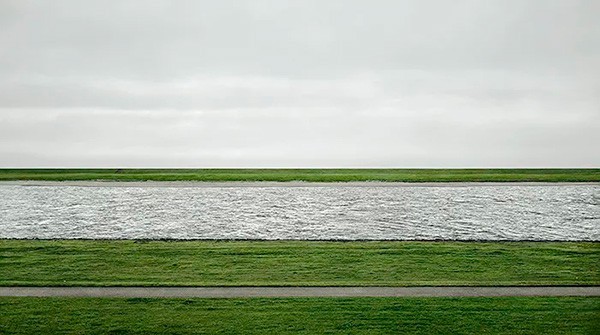
Gursky Quotes on Ideas and Research
The issues of our time – climate change, the exploitation of natural resources, working conditions, the monopolisation of distribution structures – they’re all themes in my work. But I don’t have solutions to offer. Everyone knows that Amazon represents turbo-capitalism, but it’s for the viewer to come to their own conclusions. I keep awareness of the problems simmering without losing sight of the beauty and complexity of the world so that interest in it doesn’t disappear.
I am a passionate newspaper reader every day, so many of my ideas come from reading newspapers, or looking in magazines or at TV, so that’s the reason why my images are connected to what’s going on in the world.
These days, I no longer go places without a plan, hoping to simply discover things. My process is much more conceptual and research-based.
I collect images which surround us and, from time to time, I check all the images and then, because it is difficult to make a decision – because I don’t have the time or energy to follow everything that seems interesting – it’s a gamble to say okay, this project, I think we should start doing research on it.
Normally, the way I work is that I’m doing research in the media, I find my location, do further research and then I’m asking for permissions. Then I travel to this place and I’m doing my work.
I think I’m a very slow worker, so I focus on one picture and the background of the original idea for why I choose this location or this space is always a reference to a picture that I did before, but then I change the content a bit.
Andreas Gursky Photography Techniques
I compare my work to that of a writer. He writes from what he remembers and his different impressions. In a way, a writer has the freedom to connect different thoughts, and this is the way I work with photography. It is not a straight documentary but the details that are going together, they come from the real world and they exist.
I am making images, and to make an image you have to follow certain rules so that it becomes an image.
For example, I’m working on an image, which is not in the exhibition, which shows the construction of an ocean liner. This is a subject that exists in the world. Millions of people have seen it. And I have an idea of how to show it: it sounds simple if I say it – the size of the boat is so big that our imagination is not strong enough to [encompass] it. But I have a conceptual idea to show this boat in a way you haven’t seen it. If I was still working in analogue, if I didn’t have the abilities to alter or construct images, then I couldn’t make such pictures, because in this case it will be more invention.
Even if a picture is completely invented or built, it’s necessary that you could imagine that it’s a realistic location or place. I am not happy if the picture looks completely surreal. Even if I am working with montage, I want that you don’t see it.
All my pictures are based on a direct visual experience from which I develop an idea for a picture, which is subjected to testing in the studio and eventually worked on and precised at the computer.
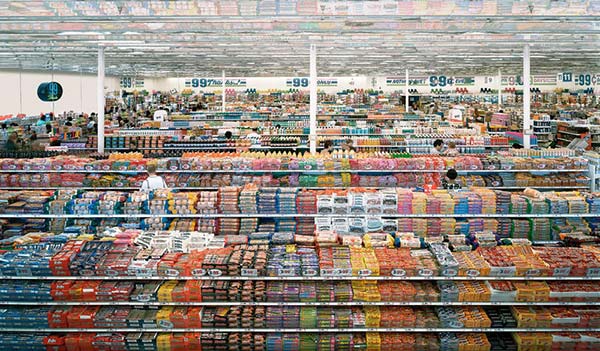
Digital Technology and Post-Production
Editor note: Gursky’s final images are built up from multiple images, each slightly different, parts from one added to or replacing another, until he has something that satisfies him.
Digital technology, gives me a lot of possibilities and freedom to work. When I did my straight photographs in the 1980s, it was really tough to find those images. You can’t find a location like Salerno on any [old] day. Because I didn’t know what I was looking for. It was just by chance that I found that image. But once you have made one like that, you look for similar locations and you start to repeat yourself and it becomes more difficult. So now I have [many more] possibilities.
In the early 1990s, I began to work digitally, combining shots, excising certain details, repeating others. The final works were no longer simple straightforward shots, like Salerno, but constructed images. My focus is on the expanse rather than the detail. Critics talk about me always capturing scenes from a raised perspective, but my ceiling images were taken from below, and my Formula 1 work from straight on.
If you do so much post-production, it takes such a long time to finish a picture. Normally, I don’t have the distance after this process to get the right feeling: is it a good picture, an okay picture, or a bad picture? So I need the pictures around me to prove the quality of the picture.
Space and Distance
Distance is also an important factor, which is something else I inherited from the Bechers. If a photojournalist was commissioned to document a scene, they would get much closer. But by always keeping a distance, I allow the viewer to come up with their own opinion. While my images are all comprised of many details – which you can explore in depth because of the high resolution – that’s not what they are about. Each one is always a world of its own, created.
Space is very important for me but in a more abstract way, I think. Maybe to try to understand not just that we are living in a certain building or in a certain location, but to become aware that we are living on a planet that is going at enormous speed through the universe.
My images are a lot about space, but that doesn’t mean it’s space that is unlimited. Space for me is a metaphor for the way we as mankind travel through space at home and on our planet. And the universe is huge and we are so limited in our perception and this is one of the things I want to show in my image.
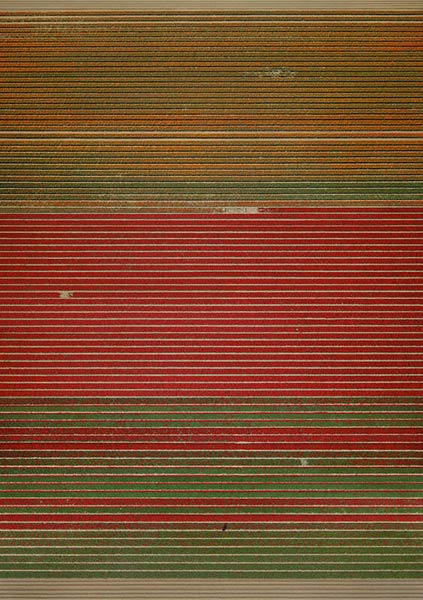
The Final Print and the Market
I don’t have many choices in producing my work, so I take the photograph but the final result is always this [C-print mounted on] Plexiglas and it’s framed. On the one hand, I am happy that I found a solution that works very well for presentation; but on the other hand, I wish I could work with different materials. I’m a bit jealous of painting, where you have surface and the smell of paint. In my case, it’s always the same. So maybe this is the background for at least trying to make a difference between the sizes.
I love paintings, I collect paintings, and I am jealous because the material I use, the surface of the acrylic glass, is very boring for me. The plastic is not a very sexy material. But it is the only material we can use for making very huge photographs. And if it’s a good picture, you don’t notice the plastic any more.
The American Abstract Expressionists fascinate me. The distinction between photography and painting is still that the viewer always reads photography as what is presented, whereas painting is about the presentation as such. That has always been a guidepost for me. It is interesting to me that someone looking at my work tends to be stunned initially by being first confronted with visual phenomena that cannot be immediately classified.
In the last years, I always produce the big works because I am accustomed to the size and because I normally work a very long time for one picture, and because I am showing in museums that ask for big sizes. The post-production sometimes takes a year and I am not working on so many different pictures at one time. In the last years, my production was more than before, but sometimes it is only three or four pictures a year.
The whole market situation was a topic that might have been important to me. What matters is now, and the fact that I made some money back then is what permits me to be completely free and independent in my work now.
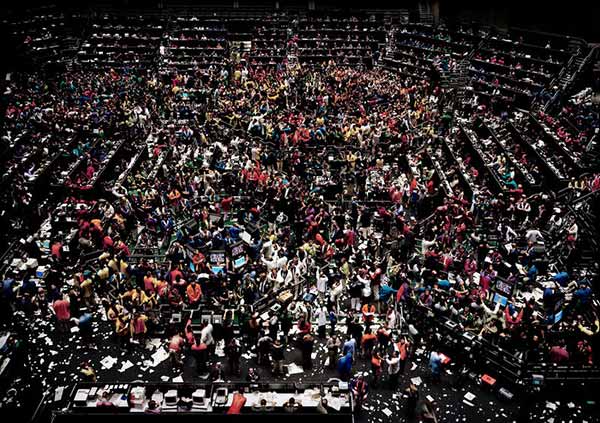
Quotes for Better Photography
In retrospect I can see that my desire to create abstractions has become more and more radical. Art should not be delivering a report on reality, but should be looking at what’s behind something.
I stand at a distance, like a person who comes from another world.
I believe that there’s also a certain form of abstraction in my early landscapes: for example, I often show human figures from behind and thus the landscape as observed “through” a second lens.
I’m always telling my students: you won’t get anywhere sitting at a table thinking. You learn by doing. That’s how you move forward. And even if you do something wrong, the result may be much more interesting than what you went looking for.
One sometimes unconsciously makes the right decision.
What’s your Favorite Andreas Gursky Quote?
Have a favorite Andreas Gursky quote from the list? Let us know in the comment section below.
Don’t forget to bookmark this page, or print it out, and refer to it next time you need some inspiration. If you’ve found the article helpful, then we would be grateful if you could share it with other photographers.
To see more of Andreas Gursky’s photography, check out the image archive on his official website.
Looking for more words of wisdom from master photographers? Check out the quotes section of Photogpedia for more great photography quotes.
Related Quote Articles:

